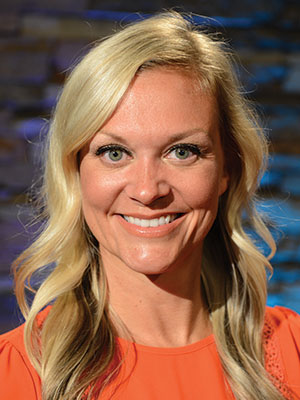What should I look for in a therapist to help me process my experience with cancer?

Julia H. Rowland, Senior Strategic Adviser at Smith Center for Healing and the Arts in Washington D.C. Photo courtesy of Smith Center for Healing and the Arts
JULIA H. ROWLAND: First, seeking out a therapist is an excellent idea. Most individuals diagnosed with and treated for cancer find it helpful to talk with someone about what they’ve been through and how they are coping. Yet, too many people who have experienced cancer don’t even realize it’s an option or know how to find a therapist.
If you’re looking for a therapist while you’re still in treatment or seeing your oncologist regularly, asking your cancer care team for advice is a good start. Local cancer organizations or support groups are also good sources for referrals. Support group members or other people who have been through similar experiences with cancer often know about counselors who work well with those treated for cancer.
You may wonder if it is necessary to see someone who is trained specifically in psycho-oncology, the care of individuals being treated for or with a history of cancer. The answer is no. Most licensed, experienced therapists are well qualified to care for a patient with a history of cancer.
Once you’ve identified a therapist and met for the first time, the most important thing to consider is whether this is someone you can talk to about whatever is on your mind. You should not feel any need to hide or censor how you are feeling or what you are thinking. Some questions to ask yourself are: Do I feel comfortable with this person? Do I have a sense that she or he understands me? Can I can relate to him or her? Is she or he a good listener? Is the advice provided useful? Is the feedback insightful? Do I trust this person?
Practical considerations are also important. Is it convenient for you to get to the place where this person practices? Can you find a mutually acceptable time to meet? How often can you meet? How much do they charge for their services? Are they covered by your insurance?
It’s worth noting that there is a great deal of variability in the cost of therapy based on the type of treatment provided and other factors, such as the therapist’s training and whether care is delivered in a home office or a clinic. Low-cost or free services may be available.
Finding the right therapist can help you make sense of what has taken place, locate any additional support you may need, and put you on a path to feeling better. If the first person you meet doesn’t work out, that’s fine. Give yourself the opportunity to find a good match.
FINDING A THERAPIST // CancerCare offers free individual and group support and resources to anyone affected by cancer. // Livestrong explains different types of counseling. // The American Psychological Association provides a tool to help you find therapists in your area.
I’m struggling to get a good night’s sleep due to pain. What sort of evening routine should I aim for?

Eric Zhou, Psychologist at Dana-Farber Cancer Institute in Boston. Photo courtesy of Dana-Farber Cancer Institute
ERIC ZHOU: First, make sure you have been evaluated thoroughly and have a treatment plan in place to target the pain. If you’ve determined that the pain is being managed as well as it can be, then you can begin to think about ways to improve the quality of sleep.
I would encourage you to keep a sleep diary. Keep track of when you go to bed, when you wake up, how long it takes to fall asleep, how many times you wake up at night, and how long you are awake during the night. Sleep varies from day to day. We tend to get wrapped up in the bad days and forget that there are often at least moderate days mixed in.
Next, rather than focus on a nightly routine, set a consistent wake-up time each morning. Attempting to go to bed at the same time every night can feel like chasing fool’s gold. What often happens is that people go to bed in pain and try hard to sleep, and all they do is create frustration. They find they can’t sleep and that compounds the pain, which worsens the sleep. It’s a feedback loop.
An analogy I like to use is this: If I have to catch an early flight the next morning, I’ll feel pressure to go to sleep the night before, which is disruptive. For a patient with chronic pain, it’s often like that every night. There is nightly pressure to get to sleep, and that actually gets in the way of sleeping. That’s why the target should be a consistent time to wake up. This way, you also avoid oversleeping in the mornings, which negatively impacts sleep the next night.
In deciding when it’s time to go to bed, it’s important to learn the difference between feeling tired and feeling sleepy. Many people with insomnia go to bed tired but not sleepy and lie in bed for two hours. Sleepy is that overwhelming sensation of being unable to keep your eyes open. Go to bed when you are sleepy, not when you are simply tired.
I also recommend avoiding the bed for anything other than sleep. Don’t use your cell phone, read or watch TV in bed. Don’t use the bed as a place to try to sleep. This is what we call “sleep effort,” and you want to avoid the bed as a place for a failed event.
Finally, it’s important to recognize that you may not be able to bring your sleep back to what it was pre-cancer or pre-pain. Setting realistic expectations is important, as many survivors realize post-treatment that there is a new normal. Your expectations about sleep will play a critical role in the perceived quality of your sleep.
SLEEPING THROUGH PAIN // The National Sleep Foundation explains how pain affects sleep. // Healthline explores the connection between sleep, depression and pain. // Harvard Health offers tips on sleeping with pain.
My caregiving responsibilities are getting to be too much for me. How can I express this to the person I’m looking after?

Rachel Cannady, Strategic Director for Cancer Caregiver Support at the American Cancer Society in Atlanta. Photo courtesy of the American Cancer Society
RACHEL CANNADY: I think the first thing to keep in mind is that many caregivers have unrealistic expectations of themselves. Cancer caregivers often feel they should be doing more than is realistic, creating a sense of guilt. This caregiver guilt has been linked to increased distress and an overall poorer quality of life.
So the first thing to do is take a step back and realize that your own sense of how much time you should be spending on caregiving may well exceed the expectations of the person you are looking after. With this in mind, it is important to maintain open lines of communication with the person you are caring for about the challenges you are facing, while being careful not to place blame on him or her.
If you determine that the caregiving needs have become too much for you, perhaps the most constructive way to address this with the person you are caring for is to look for solutions. Maybe set up a time to discuss how you can work out a realistic plan of care together. Start by making a list of what the needs are. Then work together to make sure those needs will be met.
Speak openly about when your presence is needed and when it isn’t. For example, perhaps you, as a primary caregiver, need to be at certain medical appointments. But there are likely other tasks that someone else could tackle in your place.
It’s hard sometimes to lean on family members and friends, but don’t be afraid to assert your own needs. You’re likely to find that others are more than willing to help out, but you may need to be specific about where help is needed.
If you can’t be available at certain times, let the person you are caring for know it. You might find he or she will say something like “Oh, my friend Kathy can come. She’ll do it for me.” Having a plan of care in place and remembering that other people can help to lighten the load are both key.
Many caregivers find themselves juggling multiple roles. You may have children to care for, a full-time job and other responsibilities. As you manage your role as a caregiver, you shouldn’t underestimate the importance of taking care of yourself. It’s critical to make sleep a priority and take breaks. Even a 30-minute walk around the block with no distractions can help you feel better. Taking that time out for your own needs will help keep your energy level up so you can better sustain care over the long term.
MANAGING CAREGIVING // The Mayo Clinic shares tips for managing caregiver stress. // The U.S. Office on Women’s Health offers steps for caregivers to relieve stress and prevent health problems. // AARP discusses ways to balance caregiving with your job.
Cancer Today magazine is free to cancer patients, survivors and caregivers who live in the U.S. Subscribe here to receive four issues per year.




